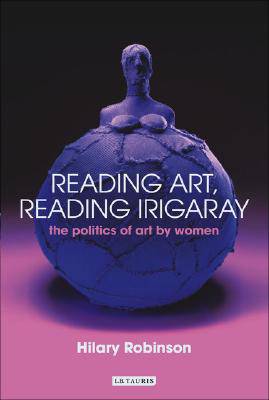
- Retrait gratuit dans votre magasin Club
- 7.000.000 titres dans notre catalogue
- Payer en toute sécurité
- Toujours un magasin près de chez vous
- Retrait gratuit dans votre magasin Club
- 7.000.0000 titres dans notre catalogue
- Payer en toute sécurité
- Toujours un magasin près de chez vous
135,45 €
+ 270 points
Description
Luce Irigaray is one of the foremost philosophers and feminist thinkers of our day. Her work has had an enormous impact on the visual arts and is widely taught and read across the field - yet the actual implications of this influential body of thought for art itself are rarely elucidated. What does her work really mean when it comes to the art made by women artists? Hilary Robinson looks at the work of groundbreaking women artists including Louise Bourgeois, Rachel Whiteread, Bridget Riley and Jenny Saville in light of the key strands of Irigaray's thought, from ideas of masquerade, mimicry, morphology and the maternal to the original notions of 'mucous' and 'the speculum' for which she is well known. With a fine eye for the intricacies of the philospher's thought, Robinson reveals the implications of Irigaray's work for the relationships between gender, subjectivity, language and art. Refuting accusations of essentialism - the belief in innate biological gender differences - Robinson here poses the question: if language is gendered, as Irigaray argues, and if art is a language, what are the ramifications for the visual 'languages' employed by women artists now and in the future?
"Reading Art, Reading Irigaray" will be of interest to students of fine art, visual theory, and gender studies, to students of Irigaray's work and indeed to all those interested in the politics of art by women.
"Reading Art, Reading Irigaray" will be of interest to students of fine art, visual theory, and gender studies, to students of Irigaray's work and indeed to all those interested in the politics of art by women.
Spécifications
Parties prenantes
- Auteur(s) :
- Editeur:
Contenu
- Nombre de pages :
- 240
- Langue:
- Anglais
Caractéristiques
- EAN:
- 9781860649530
- Date de parution :
- 01-11-06
- Format:
- Livre broché
- Format numérique:
- Trade paperback (VS)
- Dimensions :
- 160 mm x 236 mm
- Poids :
- 535 g

Les avis
Nous publions uniquement les avis qui respectent les conditions requises. Consultez nos conditions pour les avis.






